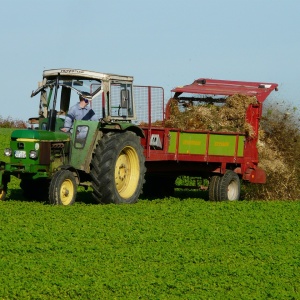
This paper analyses thousands of nitrogen policies from 186 countries. It finds that environmental nitrogen policies are not well integrated across various domains (such as water and air pollution) and that many agricultural policies encourage the use of nitrogen fertilisers, prioritising food production over environmental protection.
Among nitrogen policies focused on environmental sinks (sinks are places where pollution goes, as opposed to sources which are where pollution originates), almost half focus on water pollution, followed by air pollution, ecosystems and climate change. Only 28 of the 1,390 sink-focused policies consider nitrogen impacts across multiple sinks, which the authors argue is problematic because policies that improve impacts in one sink could cause a worsening of impacts in another sink.
Two-thirds of the nitrogen policies analysed are related to agriculture (with other sectors including waste, industry, transport and energy). The authors note that since nitrogen is an essential input to agriculture (as fertiliser) and therefore important for food security, agricultural policies addressing its use and environmental impacts must be more nuanced than in sectors where nitrogen is simply a by-product.
Abstract
Nitrogen pollution is an important environmental issue gaining traction in policy circles. However, there is little understanding of current nitrogen policies around the world: whether they account for nitrogen’s unique ability to exacerbate multiple environmental impacts or balance nitrogen’s dual role as an essential agricultural input and major pollutant. Here we assemble and analyse the first database of nitrogen policies generated by national and regional legislatures and government agencies, a collection of 2,726 policies across 186 countries derived from the ECOLEX database. The database covers all major environmental sinks (such as air, water and climate), economic sectors (including agriculture, wastewater and industry) and policy instruments (from market mechanisms to regulatory standards). We find that sink-centred policies are focused predominantly on water, mirroring the distribution of nitrogen’s global environmental and human health costs. However, policy integration across sinks is severely lacking, which heightens the risk of substituting one form of nitrogen pollution for another. Moreover, two-thirds of agricultural policies (ranging from broad sectoral programmes to nitrogen-specific measures) incentivise nitrogen use or manage its commerce, demonstrating the primacy of food production over environmental concerns.
Reference
Kanter, D.R., Chodos, O., Nordland, O., Rutigliano, M. and Winiwarter, W., 2020. Gaps and opportunities in nitrogen pollution policies around the world. Nature Sustainability, pp.1-8.
Read the full paper here. See also the Foodsource resource How do food systems contribute to water pollution?












Post a new comment »